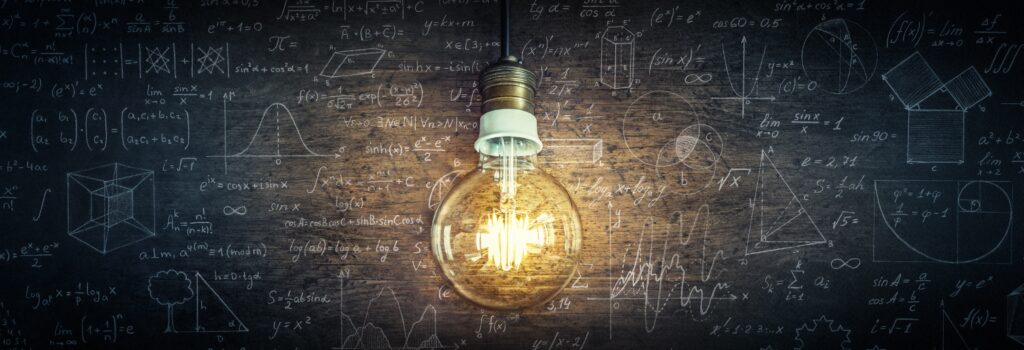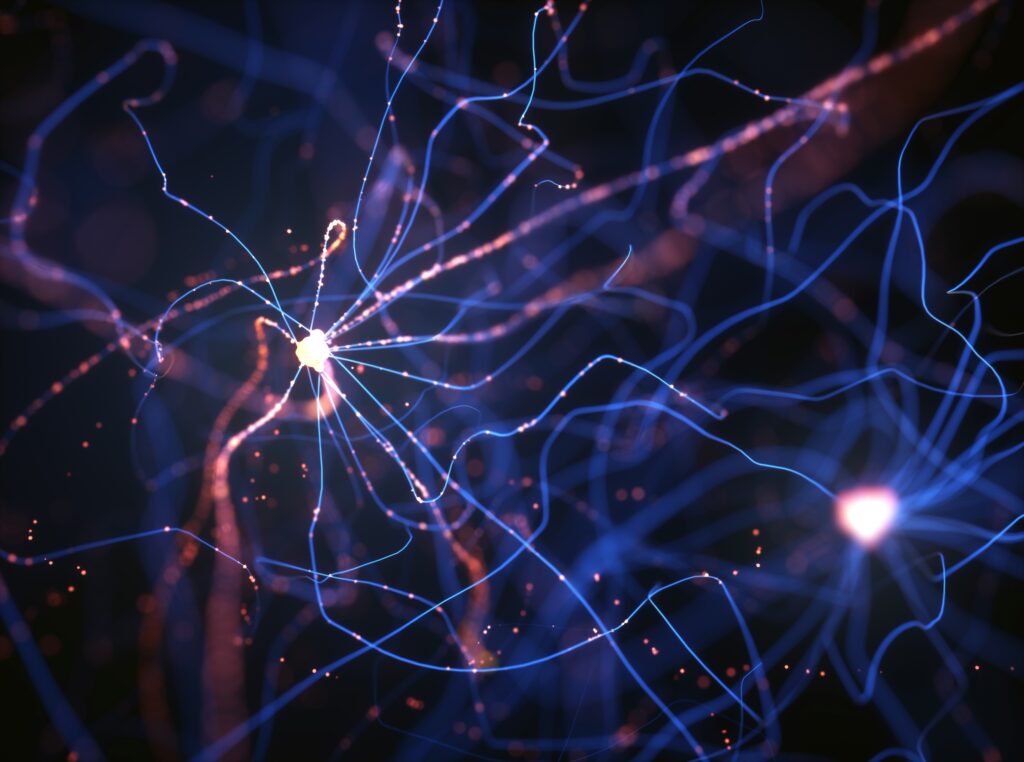The miraculous epicycles of materialism
Reading | Ontology
![]() Bernardo Kastrup, PhD, PhD | 2022-02-24
Bernardo Kastrup, PhD, PhD | 2022-02-24

Faced with a growing mountain of refutations in the form of empirical evidence and clear reasoning, materialism tries to survive through a bizarre display of absurd imaginary entities, hypotheses and hollow rhetoric, writes our executive director in this week’s mid-week nugget. This is a long, in-depth, but worthwhile read.
Starting with Ptolemaic astronomy in antiquity, and then all the way to Copernican astronomy during the Renaissance, the celestial bodies were thought to move in perfectly circular orbits. The motivation for this widespread assumption was a particular metaphysical commitment: the heavens were perfect and only circles are perfect shapes; ergo, the celestial bodies had to move in circular orbits.
At the time, scholars didn’t think of this notion as an arbitrary assumption, but as an obvious reality instead; one that everybody had known to be true for almost two millennia. It was preposterous to think that all those people had been wrong all that time. Culture—not reason, not evidence—had made circular orbits not only extremely plausible, but even self-evident.
As empirical observations began to show that orbits aren’t circles, scholars started postulating so-called ‘epicycles’: the hypothesis that the celestial bodies move along circles, which in turn move along other circles, and these along yet other circles, and so forth. Despite the precariousness of the resulting models, the entire house of cards was still built on circles alone, so a cherished metaphysical commitment could be preserved.
Eventually, of course, the continuous need to add more and more epicycles reached a tipping point. The sheer accumulation of ‘anomalies’ eventually forces one to abandon one’s metaphysical commitments. Thomas Kuhn has famously called this tipping point a ‘paradigm shift’: when reason and evidence force us to look upon reality with different eyes [1].
But make no mistake: before scholars accept a paradigm shift, they will always conjure up epicycle on top of epicycle in a naked defiance of reason and evidence, so to preserve the metaphysical commitment they identify with. The motivation for this is that, at any single step in the process, parting with that commitment feels less plausible than adding just one more epicycle. And so, more and more epicycles are added, driven by the sense of plausibility that culture manufactures. The history of philosophy and science shows that this has happened repeatedly.
The present is no different. Our metaphysical commitment today is that physical stuff—abstractly defined as being purely quantitative and independent of mind—has standalone existence and somehow generates mind. Technically, this is called ‘mainstream physicalism’ but, colloquially, it’s often referred to as ‘materialism.’ As evidence accumulates in analytic philosophy, foundations of physics and the neuroscience of consciousness against materialism, scholars are busy fantasizing about the epicycles needed to safeguard it from the relentless clutches of reason and evidence.
Objectively speaking, these epicycles of materialism are now reaching the level of patent absurdity. But because they are couched in the sense of plausibility manufactured by our culture, they are still put forward not only with a straight face, but also with the triumphant pride that accompanies a great scientific advancement. My goal for the remainder of this essay is to present to you, as neutrally as I can bring myself to do it, what the latest epicycle proposals are.
‘Anomalies’ in foundations of physics
For over forty years now, we’ve known from repeatedly refined and confirmed laboratory experiments that the physical properties of the basic building blocks of the material world—think of the mass, charge, spin, speed and direction of movement of elementary particles—do not exist prior to being measured [2-19].
In general lines, these experiments go as follows: two entangled particles—say, A and B—are shot in opposite directions. After they’ve traveled for a little while, a first scientist—say, Alice—measures particle A. Simultaneously but far away, scientist Bob measures particle B. As it turns out, the physical property Alice choses to measure about particle A determines what Bob sees when he measures particle B.
What this shows is that measuring particles A and B doesn’t simply reveal what their physical properties already were immediately prior to the measurement, but in some sense creates those physical properties. For as long as no measurement is performed, we cannot say that particles A and B even exist, for they are defined in terms of their observable properties.
As strange as this may sound at first, there is a simple and intuitive explanation for it: physical properties are simply the appearance or representation, upon measurement, of a deeper and more fundamental layer of reality. Analogously, the dials on an airplane’s dashboard are also a representation of the actual world outside the airplane, insofar as they convey information about that world. And the dials show nothing if the airplane’s sensors aren’t measuring the real world outside, so the appearance or representation can’t be said to exist unless and until a measurement is performed. Only then, do the dials produce an appearance.
What we call the physical world is thus analogous to the airplane’s dashboard: it shows nothing unless and until we measure the real world underlying the physical. Physicality or materiality is the result of a measurement displayed on the internal dashboard we call perception. We do not have a transparent windscreen to see the world as it is in itself; all we have is the dashboard and the sensors that feed it with data. In other words, we only have perception and our sense organs. Therefore, we confuse what is perceived with the actual world and proclaim that reality is physical, or material. Experiments have now shown that this is as nonsensical as a pilot, flying by instruments alone, insisting that his dashboard is the world outside, as opposed to an appearance or representation thereof.
The point of scientific experimentation, of course, is to unravel this understandable confusion and make clear to us that the real world out there is not what we call ‘material.’ But since this contradicts materialism, many scientists and philosophers feel that it is more plausible to add an epicycle to their theories than to accept what experiments tell us.
The ‘fantastic hidden stuff’ epicycle
Take popular YouTuber and physicist Sabine Hossenfelder, for instance. She proposes that there are mysterious ‘hidden variables’ that account, under a materialist metaphysical framework, for the experimental results discussed above. These hidden variables are not explicitly defined—beyond imaginary toy models with little to no bearing on reality [20]—even in principle. Like circular orbits and their epicycles, they are purely imaginary entities for which there is precisely zero empirical evidence.
Even the underlying motivation for postulating hidden variables is conspicuously questionable. Indeed, if we were to exclude the non-hidden properties of nature—mass, charge, spin, etc.—from our picture of reality, all kinds of obvious things would go immediately unaccounted for: without mass we couldn’t account for inertia; without charge we couldn’t account for electricity; without spin we couldn’t account for magnetism; etc. As such, there’s good reason to infer that these properties exist in some sense. However, and very tellingly, if we deem ‘hidden variables’ to be just what they appear to be—that is, fantasies—nothing in our world goes unaccounted for; nothing at all. We don’t need hidden variables for anything other than to safeguard a metaphysical commitment; one so internalized that many have grown to conflate it with fact.
To make her epicycles at all tenable, Hossenfelder asks us to part with a notion integral to our understanding of experimentation and reality itself. She considers this notion a mere “assumption” and refers to it in technical terms: “statistical independence” [21]. If you don’t know what this means, you might believe Hossenfelder’s claim that it’s merely some kind of arcane mathematical postulate we might as well do without. But what if you grasp what “statistical independence” actually means?
Suppose that you want to photograph the moon. You set the aperture and exposure of your camera so to capture a clear image. But you don’t ever imagine that what the moon is—or does—up there in the sky will change in response to your particular camera settings, do you? The moon doesn’t care about the settings of your camera or even the fact that you are photographing it; it is what it is and does what it does irrespective of how it is being measured. There’s no causal chain, starting at your camera and somehow finding its way to the moon, which turns the moon into something it isn’t—say, green—or forces it to do something it otherwise wouldn’t—say, rotate the other way around—just because of how you set your camera. Is this a mere “assumption” or a basic, empirically-established understanding of how reality, experimentation and measurement work? Do cameras have the power to change reality by merely photographing it?
What I’ve just described is what “statistical independence” means. It states that the thing measured (the moon) doesn’t change in response to the settings of the detector (the camera) used to measure it; how could it? Nonetheless, Hossenfelder calls this fundamental understanding a mere “assumption” and asks us to abandon it: according to her, what Alice and Bob see depend on their measurement choices because particles A and B, which have standalone existence, change in response to the detectors’ settings; just as if what the moon is or does depended on the aperture and exposure settings of your camera. Mind you, Hossenfelder provides no coherent account of how this magic is supposed to happen; she just knows that it does, because her metaphysical commitment implies that physical properties must have standalone existence.
Notice that, under analytic idealism, the moon we see is not the thing in itself, but a representation thereof on the dashboard we call perception. There is indeed something real out there, which itself cannot be magically changed by measurement or detector settings, but which, when measured, presents itself to us in the form of the appearance we call the moon. Under analytic idealism, measurement doesn’t change reality; it simply produces an appearance or representation thereof, which in turn is relative to the measurement context. The physical world is the representation produced by measurement, not the reality measured in the first place.
But under Hossenfelder’s ‘hidden variables’ model, that great spheroid in the night sky, with a certain mass, speed and direction of movement, is the thing in itself, not a mere appearance or representation. In stating that camera settings—in the context of this metaphor—change the thing observed, she is attributing to these settings the magical power to change reality itself, not mere representations thereof.
The ‘compensate hollow argument with assertive rhetoric’ epicycle
Independently of the above, a series of even more recent and compelling experiments refutes Hossenfelder’s epicycles in a different way: these experiments show that, just as predicted by quantum theory, physical properties—which define what physical entities are—aren’t absolute, but relative, or “relational,” or “contextual” [22, 23]. In other words, they do not have standalone existence but arise, instead, as a function of observation in a way that depends on the particular vantage point of the observer.
If we go back to our dashboard metaphor, this isn’t surprising at all: what the dials display is a function of what the airplane’s sensors measure, which in turn is relative to the particular position and orientation of the airplane in space and time. So two different pilots in two different airplanes may get different dashboard readings of the same sky, because of their particular position and orientation in it. This doesn’t mean that they don’t share the same world; of course they do. It only means that their dashboards aren’t the world, but merely representations or appearances thereof. Dashboard indications can be different, while the real world measured is the same.
But these experimental results violate Hossenfelder’s metaphysical commitment, just as the observed orbits of the celestial bodies violated the notion of perfectly circular motion. So how does she deal with them? She uses her particular brand of rhetorical assertiveness and casual dismissal of results that don’t agree with her views, so to brand the experiments invalid or “debunked.” In a recent video, she dismisses the results with a single sentence: photons—used as observers in the experiments—are not measurement devices because they don’t cause decoherence, therefore the experiment means nothing. Add a big red ‘X’ on top of the respective papers and touché; job done. With one simple statement and a silly visual aid, Hossenfelder wants you to believe that she has dismantled the careful and judicious work of many theoreticians and experimentalists over years of effort.
What is ironic is that, because she makes the statement in such an assertive manner, alongside purely rhetorical but effective visual aids—see illustrations below, taken from her videos—many non-specialist viewers are bound to buy into it despite its obvious hollowness. But I digress.
It is true enough that decoherence is often operationally associated with measurement. But we know how to probe and collect information about a quantum system without causing decoherence; that is, without disturbing the system’s superposition state. We call these “interference experiments,” an example of which is the famous double-slit experiment showing wave interference patterns corresponding to a superposition. Something of this nature—though a bit more involved—is precisely what the researchers in question have judiciously done. As such, it is simply false to maintain that, because photons don’t cause decoherence, no conclusions can be drawn from the data gathered in these experiments.
You see, epicycles are not only about adding fantastic stuff—such as ‘hidden variables’—but also about arbitrarily dismissing inconvenient stuff—such as interference experiments. They represent attempts to protect a metaphysical commitment based not only on hand-waving forms of argument—tortuous as those may be—but also on pure rhetorical strength.
The ‘turtles all the way down’ epicycle
But what if one is intellectually honest to a fault, and incapable of proposing fantastic imaginary entities that have no empirical grounding? How does an honest and brilliant mind, culturally conditioned to commitment towards materialism, find its way out of the dilemma posed by evidence and reason?
Carlo Rovelli is both a physicist and a person I have sincere respect and admiration for, one of the few truly open and honest top-thinkers in the world today, I suspect. He has acknowledged, already almost 30 years ago, that physical entities cannot have standalone or absolute existence; instead, they are “relational,” or relative to observation. As such, they arise as a result of observation. Yet, Rovelli is also a man of his time and cultural context, committed to the materialist notion that physical stuff is not reducible to—that is, explainable in terms of—anything else.
Rovelli’s way out of this dilemma is to say that reality is purely relational, or relative, which immediately raises the question: relative to what? Movement is relative, alright: two cars on a highway may or may not be moving relative to one another, even though they are certainly moving relative to the buildings along the highway. But for there to be any sense in the very concept of movement, there has to be something that moves in relation to something else; movement is not a thing unto itself, but a relational property that operates between things; and, of course, the things that move can’t themselves be movement.
But according to Rovelli, the whole of reality is made of relations. “Relations between what?” you might ask. Rovelli’s answer: relations between meta-relations, which are themselves relations between meta-meta-relations, and so on. It’s turtles all the way down. The world is made of relations but there is nothing that relates [24]. It’s like saying that the world is made of movement but there’s nothing that moves. Or, more accurately: the world is made of movement but the things that move are themselves movement. Huh?
No, really, this is Rovelli’s position, which I have confirmed directly with him. He isn’t bothered by the fact that he is clearly incurring in the fallacy of infinite regress. His epicycle is not just cumbersome and arbitrary, it’s illogical. Yet, defying logic clearly feels more plausible to him than abandoning his metaphysical commitment. Such is the psychological power of metaphysics.
Epicycles in the neuroscience of consciousness
It was only a little over ten years ago that nearly every neuroscientist—and many ordinary people—thought that psychedelics caused the ‘trip’ by lighting the brain up like a Christmas tree. Then research started coming in showing precisely the opposite: psychedelics only reduce brain activity, in many different areas of the brain. They don’t increase activity anywhere [25-29].
Predictably, neuroscientists started looking for something physical that did increase in the brain following the administration of a psychedelic drug. After all, the immensely rich, structured, intense psychedelic experience must be caused by something in the physical brain; right?
Many materialist hypotheses were put forward and eventually abandoned: functional coupling, activity variability, etc. One emerged as the most promising candidate to save cherished materialist assumptions from the clutches of empirical results: the grandiosely named ‘entropic brain hypothesis’ [30].
Indeed, there is something about grandiose technical names when it comes to epicycles. What the researchers variously call ‘entropy,’ ‘complexity’ (wow!), or ‘randomness’ is… well, noise; brain noise; brain activity that follows no recognizable pattern; the brain equivalent of TV static. And, as it turns out, researchers could show that, on average, brain noise levels increase a little bit—the understatement of the century—under psychedelics [31].
This result has now been published in several respected neuroscience journals. The notion that there is any real effect here at all is based on an analysis called ‘statistical significance.’ It means that, in the experimental data accumulated by the researchers, a certain statistical factor—called ‘p-factor’—has crossed a certain threshold. And that threshold was chosen in an entirely arbitrary fashion by someone in the 1930s [32]. Indeed, the pitfalls and arbitrariness of p-factor analyses have been much discussed in recent times [33-36]. There are even calls to abandon p-values and statistical significance altogether, so unreliable they are in showing that there is any real effect at all [37]. But in this essay, for the sake of argument, I shall overlook all this and consider the effect real.
The question now is, is a small increase in brain noise levels a plausible account of the psychedelic experience under materialist premises? Let us first consider that, in some of the drug-placebo pairs studied, brain noise levels actually decreased [38]. Yet, those subjects, too, experienced a psychedelic ‘trip.’ If their brain noise levels didn’t increase, what accounts for their ‘trips’? The researchers do not offer an explanation.
Secondly, anyone who has ever experimented with psychedelics knows that real ‘trips’ are anything but random noise. Psychedelic experiences are extremely structured, beyond even ordinary perception. Psychonauts often speak of hyper-dimensional geometry, internally-consistent alternative realities, alien beings, intricate but coherent messages and insights, and so on [39]. If a small increase in brain noise levels—which by definition have no structure—generates these experiences, where does the structure of the experience come from, under materialist premises?
Thirdly, almost the entire neuroscience literature reports correlations between patterns of brain activation and experience, not brain noise and experience. Researchers know that a sleeping subject is dreaming of something as dull as starring at a statue [40] or clenching a hand [41] based on their patterns of brain activation. Artificial neural networks can even reconstruct one’s conscious inner imagery just by looking at patterns of brain activation [42]. Is it plausible that, for psychedelic trances alone, the salient correlate of experience is noise and for all other states it is something entirely else? Can there be two entirely different biological bases for consciousness? You see, if one proposes a different materialist account of experience for each type of data, materialism becomes unfalsifiable.
Fourthly: I’ve been speaking of ‘small increases’ in brain noise levels. But I haven’t told you how small they actually are. On average, the observed increase in ‘complexity’ is of 0.005 in a complexity scale of zero to one hundred [38]! This isn’t small; it’s minuscule. Even if one ignores the problems surrounding the notion of statistical significance and considers the effect real—as opposed to an irrelevant statistical fluke, which I bet is what it actually is—it is still minuscule. And it matters that it is minuscule, for the attempt here is to account for the formidable richness, intensity and structure of the psychedelic experience—one of the top 5 most significant experiences of one’s life, according to John’s Hopkins research [43]—with a minuscule increase in, of all things, brain noise.
If we didn’t live in a culture that has manufactured plausibility for the metaphysical commitments of materialism, this result would, in all likelihood, have been dismissed not only as an inconsequential statistical fluke, but also as lacking any explanatory force whatsoever. But as it is, the result is presented as a major neuroscientific breakthrough. Of all the epicycles listed in this essay, this one probably takes the crown of most daring hypothesis, for its sheer implausibility in view of the data presented to substantiate it.
Beyond the epicycles: a paradigm shift
This is the world and culture we live in today: one where fantastic imaginary stuff for which there’s zero empirical evidence, flat-out logical fallacies, arbitrary rhetorical dismissals of solid experimental results and extremely implausible hypotheses are used to rescue one’s metaphysical commitments from the clutches of reason and evidence. Yet, that cannot last too long, for we know from history that, eventually, even the most ingrained metaphysical commitments give way to clear thinking.
We may be witnessing this today already, in subtle but clear and growing ways. Indeed, it was only a few days ago that I was debating Prof. Patricia Churchland in an event organized by the Institute of Art and Ideas, and hosted by Robert Kuhn, known for his PBS series ‘Closer to Truth.’ Churchland and I had been chosen as the most recognizable and unambiguous defenders of our respective views: I as an analytic idealist and Churchland as an eliminative materialist. The latter means a materialist that not only maintains that the mind is a product of the brain, but even that (certain) experiences don’t actually exist.
Lo and behold, after some brief introductions and commentary, Churchland opened her participation in the debate by stressing that she… well, isn’t a materialist. She claimed that she doesn’t subscribe to any ‘ism’ but prefers, instead, to peruse the data; which she surely did for the rest of the debate, avoiding argument in favor of telling what can only be described as ‘storified’ accounts of research she considered interesting. It was all indeed very interesting but terribly anticlimactic.
This is not the first or second time this happens. Some well-known materialists are suddenly turning into metaphysical agnostics. They are still willing to criticize non-materialist views and portray themselves as people who ‘simply follow the science,’ but not to unambiguously defend the materialist metaphysics that has characterized their entire public careers. Not only do they suddenly become agnostics, they try to re-write history and portray themselves as having always been agnostics. This, in my view, is the way people will slowly part with their metaphysical commitments while trying to save face. Materialism is now so ludicrously indefensible that no alternative is left to them. Expect to see much more of it in the years to come.
There is something else that I predict will happen. This prediction is based on private, personal conversations with intellectually-honest materialists, so I won’t name sources. But once we acknowledge that the physical world is indeed relational, that it indeed doesn’t have standalone existence, and that it is indeed just a superficial appearance of a deeper layer of reality, there will be a concerted attempt to very matter-of-factly extend the meaning of the word ‘physical’ so to encompass that underlying layer as well; whatever it turns out to be. To put it bluntly, whatever reality turns out to be, we will simply call it ‘physical’ and thereby render materialism unfalsifiable by mere linguistic definition. It’s like acknowledging that there is a real world outside, behind and beyond the dashboard, but referring to it as just more dashboard. Silly and extraordinarily misleading as this surely is, it will be an important means for many to feel comfortable with embracing a broader view of what’s going on, and for some others to save face and public careers. Expect to watch this pernicious but sincere—perhaps even well-meaning—charade unfold in the next couple of decades.
Ultimately, of course, it is our understanding of what is really going on that matters; our understanding of who and what we are, what reality is, and how we relate to the rest of nature. It’s not about labels or personal vindication. The meaning of our lives is what is at stake here. As such, it is irrelevant whether some will get away with face-saving charades.
Our view of reality not only will change dramatically, it is already changing as you read these lines. Thomas Kuhn’s paradigm shift is unfolding before our very eyes. We will only recognize it unambiguously in hindsight, but the writing is on the wall. Nonsense can last long and cause much harm, but reason and evidence are like the proverbial wave the slowly dissolves the rock: inexorable, irresistible and patient beyond our ability to conceive.
References
- https://books.google.nl/books?id=3eP5Y_OOuzwC
- https://arxiv.org/abs/1712.01826
- https://www.nature.com/articles/nature05677
- https://iopscience.iop.org/article/10.1088/1367-2630/12/12/123007/meta
- https://arxiv.org/abs/1902.05080
- https://www.nature.com/articles/s41586-018-0085-3
- https://link.springer.com/article/10.1023%2FA%3A1012682413597
- https://books.google.nl/books/about/Mindful_Universe.html?id=pArDC3K3O2UC
- http://ispcjournal.org/journals/2017-19/Kastrup_19.pdf
- https://journals.aps.org/prl/abstract/10.1103/PhysRevLett.49.1804
- https://arxiv.org/abs/quant-ph/9806043
- https://arxiv.org/abs/quant-ph/9810080
- https://www.nature.com/articles/nature10119
- https://www.nature.com/articles/nphys3343
- https://link.springer.com/article/10.1023/A:1026096313729
- https://arxiv.org/abs/quant-ph/9609002
- https://www.technologyreview.com/2019/03/12/136684/a-quantum-experiment-suggests-theres-no-such-thing-as-objective-reality/
- https://physicsworld.com/a/quantum-physics-says-goodbye-to-reality/
- https://www.newscientist.com/article/dn20600-quantum-magic-trick-shows-reality-is-what-you-make-it/
- https://arxiv.org/abs/2010.01327
- https://arxiv.org/pdf/1912.06462.pdf
- https://arxiv.org/abs/1902.05080
- https://www.nature.com/articles/s41567-020-0990-x
- https://books.google.nl/books?id=0iohEAAAQBAJ
- https://www.pnas.org/content/109/6/2138
- https://journals.plos.org/plosone/article?id=10.1371%2Fjournal.pone.0118143
- https://www.jneurosci.org/content/33/38/15171.short
- https://www.pnas.org/content/113/17/4853
- https://www.sciencedirect.com/science/article/abs/pii/S1053811917305888
- https://www.sciencedirect.com/science/article/abs/pii/S0028390818301175
- https://www.nature.com/articles/srep46421
- https://www.ncbi.nlm.nih.gov/pmc/articles/PMC4111019/
- https://www.tandfonline.com/doi/full/10.1080/00031305.2016.1154108
- https://www.ncbi.nlm.nih.gov/pmc/articles/PMC4448847/
- https://www.ncbi.nlm.nih.gov/pmc/articles/PMC5502092/
- https://www.nature.com/articles/s41562-017-0224-0
- https://www.tandfonline.com/doi/full/10.1080/00031305.2018.1527253
- https://www.nature.com/articles/srep46421
- https://books.google.nl/books?id=DNhTvwEACAAJ
- https://www.theguardian.com/science/neurophilosophy/2013/apr/05/brain-scans-decode-dream-content
- https://www.newscientist.com/article/dn20934-dreams-read-by-brain-scanner-for-the-first-time/
- https://techxplore.com/news/2019-10-neural-network-reconstructs-human-thoughts.html
- https://www.newswise.com/articles/study-probes-sacred-mushroom-chemical

Essentia Foundation communicates, in an accessible but rigorous manner, the latest results in science and philosophy that point to the mental nature of reality. We are committed to strict, academic-level curation of the material we publish.
Recently published
Reading
Essays
Seeing
Videos
Let us build the future of our culture together
Essentia Foundation is a registered non-profit committed to making its content as accessible as possible. Therefore, we depend on contributions from people like you to continue to do our work. There are many ways to contribute.















